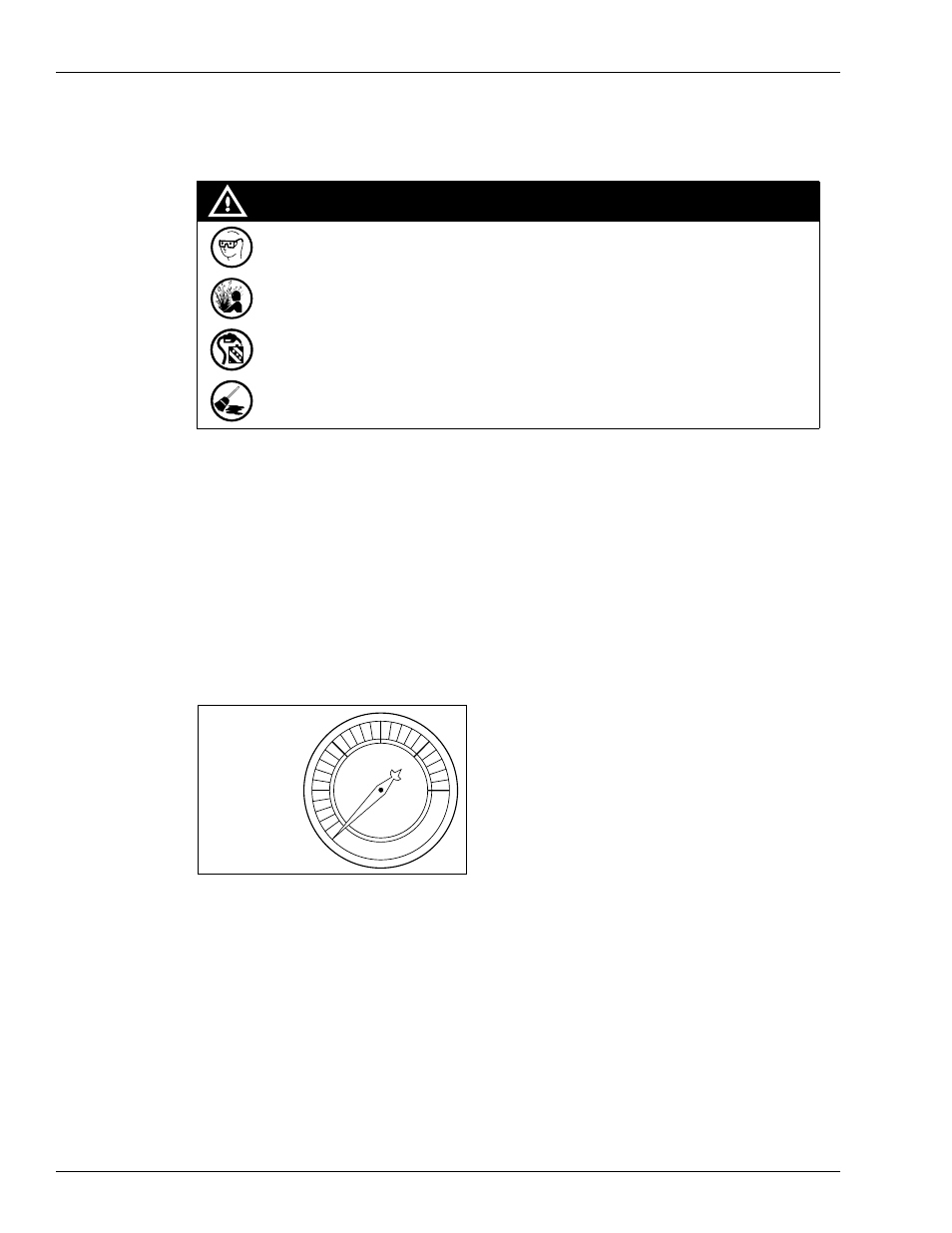Measuring pressure and vacuum, Using pressure gauge, Measuring pressure and vacuum -14 – Gasboy Atlas Start-up User Manual
Page 134: Using pressure gauge -14, Warning

Page 6-14
MDE-4334D Atlas™ Start-up and Service Manual · July 2013
Hydraulic/Mechanical Components
Measuring Pressure and Vacuum
Measuring Pressure and Vacuum
• Wear eye protection. Residual pressure and entrapped fuel may still be present
and may drain or spray while removing the parts.
• Fire and explosion could result in severe injury or death.
• Test and close the involved shear valves. Shut off power to the unit.
• Remove the parts slowly. Collect fuel in approved containers.
• Clean up all spills promptly.
WARNING
Using Pressure Gauge
Use pressure gauges and vacuum gauges to test pumps and dispensers when:
• Flow rate is too low
• Motors fail prematurely or stall (pump only)
• Units take a long time to prime (pump only)
• Units are noisy (pump only)
The use of a combined vacuum and pressure gauge eliminates the requirement to carry more
than one gauge.
Figure 6-6: Typical Pressure Gauge Dial
0
20
100
40
80
60
PSI
PRESSURE
Typical
Pressure
Gauge Dial
Face
If gauge readings are erratic, it indicates that the gauge needle pulsations must be snubbed.
Following is recommended:
• Always use accurate, calibrated gauges. Using a gauge snubber or a dampened gauge
helps prevent gauge damage and to obtain a more accurate reading. Liquid filled gauges
that dampen readings can also be used.
• Use gauges that have appropriate scales for reading in Pounds per Square Inch [PSI (scale
0-100 psi)] for pressure and 0-30 Hg (inches of mercury) for vacuum.
